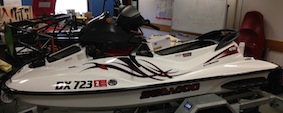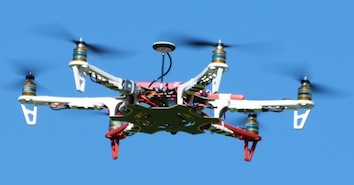A. Electric Vehicles - REV



REV (Renewable energy vehicle) is a
Faculty-wide project and looks at finding alternatives to
petrol-based cars. These projects are suitable for
students in Mechanical, Mechatronics, Electrical, Computer
Engineering and Computer Science.
REV has converted/built the following cars:
- REV Eco (2008): Conversion of a 2008 Hyundai Getz to electric drive using DC technology
- REV Racer (2010) : Conversion of a 2002 Lotus Elise S2 to electric drive using AC technology
- REV SAE-2010: Conversion of an the 2001 UWA Motorsport car to electric drive (dual motor)
- REV SAE-2013: New EV design from scratch for Formula SAE Electric (quad wheel-hub motors)
- REVski (2013/14): Conversion of a 2008 Sea-Doo Jet Ski
to Electric Drive
web: theREVproject.com
Projects available:
- Group Project Electric Jet Ski:
- Mechanical Students: Motor and battery mounts, force coupling, cooling system, evaluation
- Electric Students: Power and instrumentation circitry, safety systems
- Computer Students: Motor control, driver information
system
- Group Project Autonomously Driving SAE Electric:
Follow are pre-set race course by using GPS, radar and imaging sensors for a fully autonomous drive.
This is mainly a software project, requiring good programming skills, plus interfacing of sensors to an embedded controller. - Group Project Formula SAE Electric 2014:
Preparing the FSAE car for competitions in Europe and/or Australia, implementing intelligent sensor-based motor control fort he 4 wheel-hub motors. performance measurements and improvements
- Intelligent EV
Charging:
IT project requiring C/C++ skills to implment a simulated HEMS (Home Energy Management System), which allows EV drivers to select their charging preferences according to an assumed dynamic hourly energy tariff (minimising costs) or for assumed available solar/wind green power (maximising environmenatal benefits).
- Driver Information systems for road-licenced REV Vehicles:
- REV Eco: Programming an EyeBot M6 (Linux) in C/C++ to display vehicle/battery status, drive statistics and GPS navigation.
- REV Racer: Programming a Windows PC with graphical user interface to display individual battery status, drive statistics, GPS navigation, generate artificial engine sound
- Real-Driving Simulator:
Link the SAE car's controls (steering, brake, accelerator) to the inputs of a commercial driving simulator system, so the simulation can be driven from the real SAE car. Further build a safe roll stand, so the car can spin its wheels at a safe speed while linked to the simulator.
Group Project available:
In this project, a group of students will implement a
navigation/exploration task for a group of autonomous
mobile robots, based on the tasks of the MAGIC2010
robotics competition, based on the ROS robot operating
system. These are IT projects and require good C/C++
programming skills. Individual tasks are
- Robot navigation
- Map generation, loop closing (individual robot) and map fusion (between robots)
- Object detection using laser scanner and camera
- Human-robot interface through console at ground station, displaying all robot information
The project tasks will be tailored to match the robot competition and we expect that our team will participate in this event.

Projects available:
- GPS-based autonomous flight
- Vision-based autonomous flight
D. Robots &
Embedded Systems

Projects available:
- Maze Driving
- Develop a library of motor control and distance sensor functions
- Based on this develop a maze-following program
- Obstacle Avoidance
- Develop an image-processing library for robotics using OpenCV
- Based on this implement an obstacle-avoidance
program for optical flow
- Supercomputer on a Chip
- Design a SIMD parallel computer on an FPGA for a parallel image processing application.
- Define individual parallel processing elements and test them with Retro before implementation.
E. Simulation
Systems

We have used our EyeSim simulator for a number of projects in the past. With the advances in our embedded robot hardware, we now want to extend to capabilities of the simulator to match our new hardware. This includes new controller features such as:
- widescreen, color LCD
- touch-screen
- dual (stereo) cameras
- updated RoBIOS functions
- new functions facilitating repeated operations,
e.g. for running Genetic Algorithm applications
This project is a software project and requires good
programming skills in C and C++.

- Replacement of Diesel-operated mining vehicle by electric vehicles
- Gain through reduced ventilation requirements
- Gain through higher reliability, less maintenance and
longer lifetime of electric equipment
- Necessary underground EV charging infrastructure
- Necessary EV fleet charging management
- Optional energy buffering through batteries
- Optional reduction of grid power requirement through
inclusion of renewables,
especially solar PV systems, geothermal, etc.
- Reducing mining personnel through:
- (partial) automation, e.g. of transport trucks, drilling rigs
- remote control

(Image: interactivearchitecture.org)